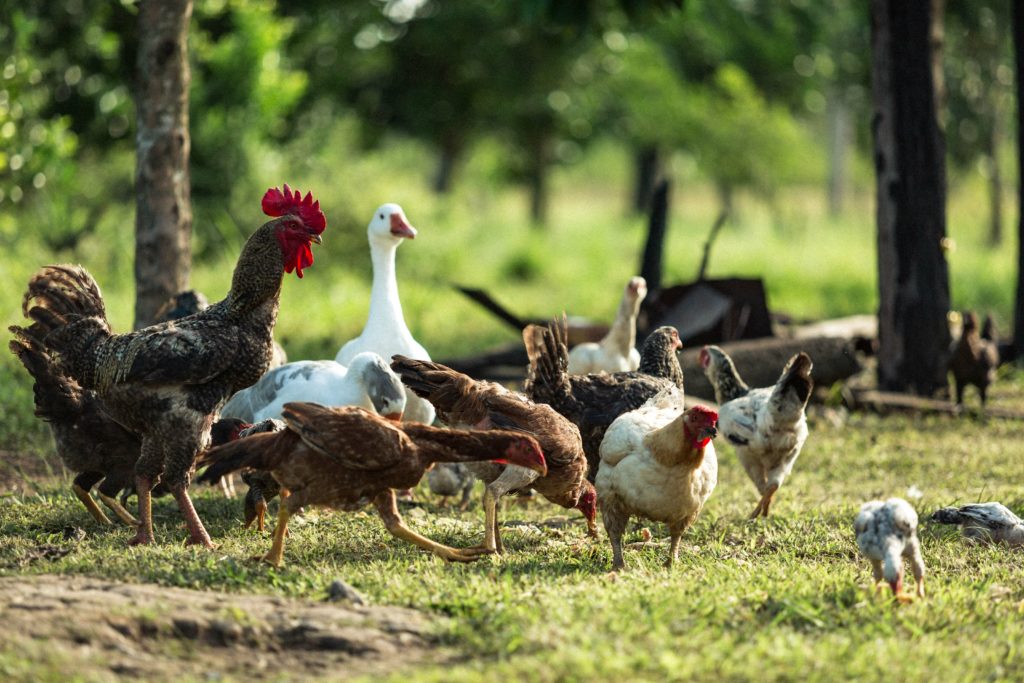Let’s face the truth. Chickens are the gateway to multiple species of birds. Or was that only me? I started out with a flock of chickens, learned that it’s not that hard to keep backyard poultry, and then found myself with all the other types of birds out there: ducks, geese, turkeys, guineas, and even peafowl.
Once I realized how fun all the different birds are, it’s possible I went a little crazy. We started with chickens and found ducks to be a very easy addition. After that, someone dropped off a turkey, then a peacock, and now we also have guineas and geese. After a few years of running a mixed flock, here are a few things you need to know about keeping multiple species of birds together.
Not all housing works for all birds.
One of the trickiest aspects of keeping multiple species of birds together is housing. Chickens need a coop they can go into at night to keep them warm and safe from predators. Ducks, geese, turkeys, and peafowl don’t necessarily need a coop, but you will want to offer some sort of protection from wind and snow. A three-sided, covered lean-to type shelter works well for the larger birds.
Some birds are messier than others. Our ducks and geese go inside the coop when it’s really cold outside. Both of these types of fowl need water to help them eat and we learned in a hurry not keep water in the coop because they will destroy the coop in short order if water is kept inside. Once we started keeping the water outside the coop, it became a little more manageable.
Turkeys, guineas, and peafowl like to roost in trees or on high buildings. James the Peacock and Tarzan the Turkey both slept on top of the chicken coop for a long time. In fact, Tarzan got his name because of his tendency to roost in trees. Guineas can be hard to train to a coop, but it is possible if you raise them with chicks.
You may have to train the guineas one at a time to leave the coop, making sure that you don’t let another guinea out until the first guinea is reliably returning. If you let a group of untrained guineas out at the same time, chances are you will never see them again.

Fighting happens.
Although it’s natural, it can be very frustrating when your birds fight, so you will want to take precautions to minimize fighting in your birds. When bigger species of birds fight with smaller birds it can be downright dangerous for the little guys.
There are two tricks to minimize fighting. First, look closely at the male / female ratio. Each species of birds needs the right ratio if you keep both genders. You’ll want to have more female than male birds for most types of bird.
- Chickens – normal sized chickens need about 12 hens to one rooster
- Ducks – one drake for every four to five female ducks
- Geese – one to one ratio, or one male goose for every two to three female geese
- Guineas – ideally one to one. Guineas are monogamous birds that mate for life.
- Turkeys – one Tom to four hens
- Peafowl – one male to three hens
Second, make sure your birds have enough space. If they have a large free-ranging area, it’s easier for birds to get away when someone starts to get aggressive. If they’re cooped up in too small an area, they may have a hard time getting away.
Feeding different species.
Feeding different bird species can also be tricky. We feed all our adult birds the same unmedicated chicken food because they are pets and also free-range. Unmedicated feed is as important as allowing them to forage to get their individual dietary needs.
However, when they’re younger, different species require different protein amounts to grow properly. Also, if you’re raising meat birds it’s very important to get the right protein amounts for ideal growth.
Disease Transmission
The last important part of keeping multiple species of birds is understanding that multiple types of fowl can transmit fatal diseases to each other. This is a risk we take on our homestead, but some people might not want the risk. Asymptomatic chickens can transmit the fatal Blackhead Disease to turkeys and peafowl, but your birds can also get these diseases from other wild birds as well, and so it is an individual risk each person has to weigh.
While there are certainly challenges for keeping multiple species of birds together, I think the drawbacks outweigh the benefits. Inter-species friendships are real and make it all worth the headaches, in my opinion. So, go forth, buy multiple species of birds and enjoy!